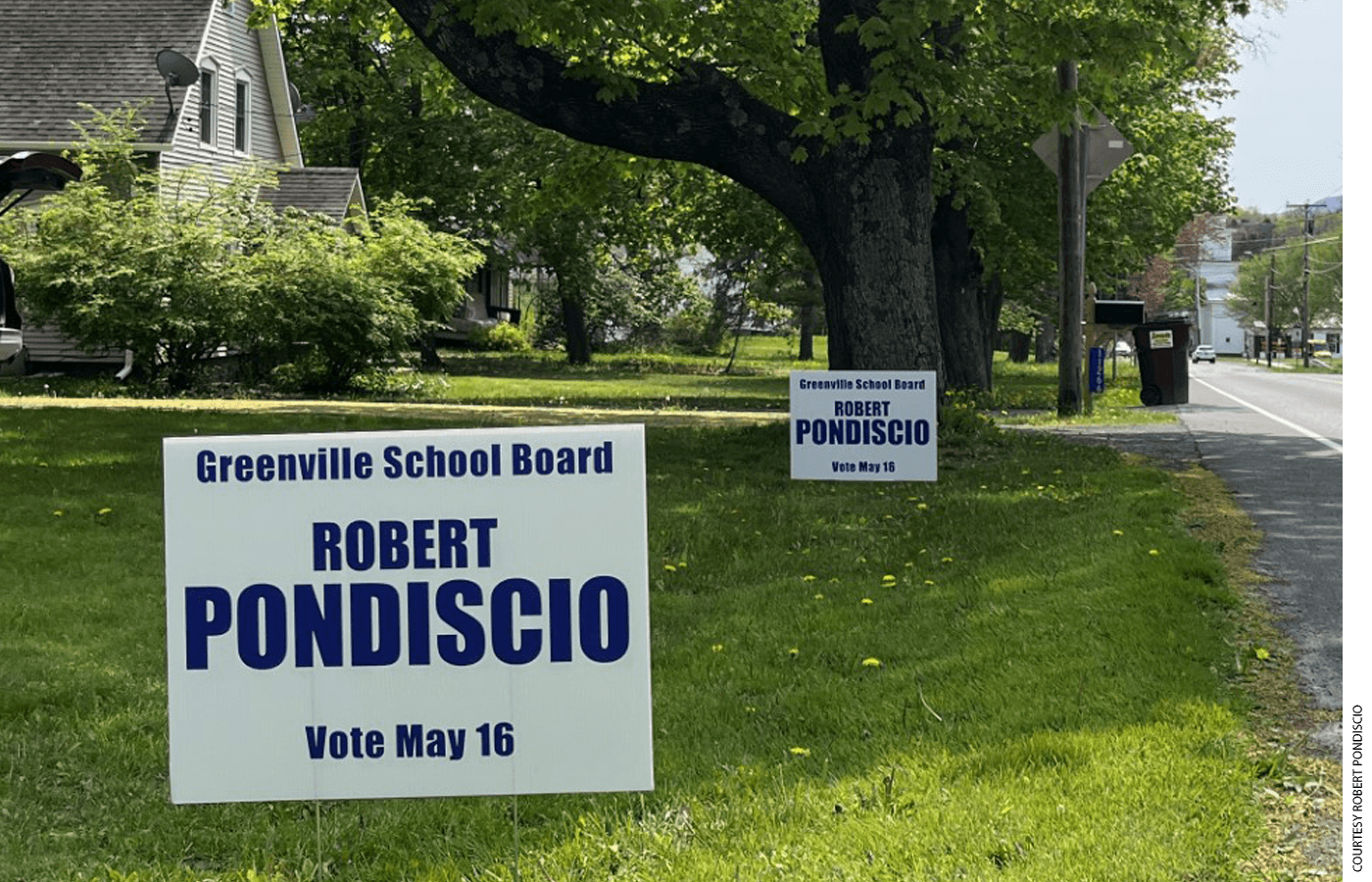
Hours before the polls closed, I realized my upstart campaign for a seat on my local school board was doomed.
At about 4 p.m., the school parking lot in my small upstate New York town began to fill up with cars of spectators arriving to watch a critical girls’ softball matchup. For the next several hours, until the polls closed at 9 p.m., parents would be coming to school to watch their kids play sports, perform in the student orchestra, see their work displayed in a school-wide art show—and to vote. An evening of family activities that normally would warm my small-town heart suddenly felt ominous.
My opponents in the campaign for school board in Greenville, New York, a town of about 4,000 people a half-hour’s drive south of Albany, weren’t the other two candidates. I ran against apathy and complacency. I raised questions about the budget and student outcomes, which seemed mediocre given the district’s per-pupil spending, demographics, and relatively low poverty rate compared to the highly disadvantaged urban schools where I’d taught. My pitch was least likely to resonate with parents flooding the school for the evening’s activities.
How had I never noticed this before? The vote for open school board seats and on a referendum to approve the district’s $34 million budget was held on May 16, with every ballot cast in a single polling place: the elementary school. The school district is the community’s largest employer. The most self-interested voters, district’s administration and staff, needed only to walk a few steps to the school cafeteria to vote their self-interest by passing the budget. The parade of parents, whose kids would be most negatively impacted if the budget failed and extracurriculars cut, provided the second wave of motivated voters. I didn’t stand a chance.
School budgets have long passed in New York State at a rate and by margins that would make Fidel Castro blush—nearly 99 percent statewide this year. It’s counterintuitive that New Yorkers would be so eager to vote themselves a tax increase year after year. But suddenly it all made sense. These hiding-in-plain-sight features were dots I’d simply never connected before, functionally enabling those with the most at stake to tilt the odds overwhelmingly in their favor.
School board elections have long been ripe for reform. In many places, balloting is “off-cycle,” occurring in May, not Election Day in November, when every other national, state, and local race is contested. The timing decreases voter turnout and favors organized interests, particularly teachers unions. I saw this in my ill-fated campaign. A few days before the election and budget vote, an expensive mailer dropped all over town paid for by the New York State United Teachers calling for voters to pass the budget, and to re-elect an incumbent school board member and a second candidate, a parent and active school volunteer.
But it was the hours of sports and entertainment that really caught me off-guard. One friend, a veteran school superintendent who has run three different upstate school districts, describes the practice of scheduling activities to lure the most engaged and favorably disposed families into schools on the day of the budget vote as “a well-hidden secret in plain sight” and a “nearly universal” school district practice. Colleagues who teach in other districts confirmed that their schools too, have sports, concerts, and other activities scheduled the day of the budget vote.
Parent engagement is an unalloyed good in public education. Scheduling an afternoon and evening of family activities may seem harmless, and even a well-intended way to boost voter participation. But just as certainly, the parents who flock to sports fields and auditoriums are those whose children are actively engaged in extracurricular activities, having a positive experience in school, and least likely to vote for change or reject a budget increase.
Reform advocates have long argued to improve participation in school board elections by moving them to November’s Election Day and making them partisan contests, with school board candidates identified by party affiliation. But at the very least, a simple legislative fix also seems in order: move school board and budget votes off-campus. This would level the playing field by making school-district employees travel to cast their ballots, just like everyone else. It would also dull the impact of school district’s de facto get-out-the-friendly-vote efforts.
Some may object that I’m proposing making it harder for people to vote, or that physical voting locations or even the timing of elections matter less in these post-pandemic days of widespread mail-in voting. But it’s a basic democratic principle that all citizens of voting age should get an equal say and none should be privileged. Imagine if the military budget were subject to approval in elections held only on army bases, or if state health-care budgets were voted on in elections that took place only in hospitals.
The lesson I learned as a first-time candidate is that holding school board and budget votes at the school itself is a bit like choosing between Christians and lions at the Coliseum. It has the appearance of a free and fair election, but the outcome isn’t really in doubt.
Robert Pondiscio is a senior fellow at the American Enterprise Institute. He is author of How The Other Half Learns: Equality, Excellence, and the Battle Over School Choice.


